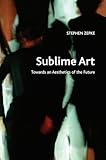Sublime Art : Towards an Aesthetics of the Future / Stephen Zepke.
Material type: TextSeries: Crosscurrents : CROSSPublisher: Edinburgh : Edinburgh University Press, [2022]Copyright date: ©2017Description: 1 online resource (296 p.) : 20 B/W illustrationsContent type:
TextSeries: Crosscurrents : CROSSPublisher: Edinburgh : Edinburgh University Press, [2022]Copyright date: ©2017Description: 1 online resource (296 p.) : 20 B/W illustrationsContent type: - 9780748669998
- 9780748670000
- 701
- N70 .Z47 2017
- online - DeGruyter
| Item type | Current library | Call number | URL | Status | Notes | Barcode | |
|---|---|---|---|---|---|---|---|
 eBook
eBook
|
Biblioteca "Angelicum" Pont. Univ. S.Tommaso d'Aquino Nuvola online | online - DeGruyter (Browse shelf(Opens below)) | Online access | Not for loan (Accesso limitato) | Accesso per gli utenti autorizzati / Access for authorized users | (dgr)9780748670000 |
Frontmatter -- Contents -- Acknowledgments -- Abbreviations -- Series Editor’s Preface -- Introduction: Exiled from Oneself– Art and Other Strange Migrations . . . -- 1. ‘Contempt for the world’ – Kant’s Aesthetics and the Sublime -- 2. ‘A stranger to consciousness . . .’ – Lyotard and the Sublime -- 3. ‘My whole structure of perception is in the process of exploding’ – Deleuze and Guattari and the Sublime -- 4. Framing the Abyss – The Deconstruction of the Sublime -- 5. For Those Who Disagree – Rancière and the Sublime -- Postscript: ‘Art after experience’– Speculative Realism and the Sublime -- References -- Index
restricted access online access with authorization star
http://purl.org/coar/access_right/c_16ec
Tracks the sublime art movement from Kant to the 21st century and onwards to a new future Stephen Zepke tracks the sublime art movement from its beginnings in Kant to its flowering in the late 20th and early 21st centuries. He shows that the idea of sublime art waxes and wanes in the work of Jean-François Lyotard, Gilles Deleuze and Felix Guattari, Jacques Derrida, Jacques Rancière and the recent Speculative Realism movement. With it, a visionary politics of art seeks to give it the most creative power possible: the power to overcome our conditions and embrace the unknown.Key FeaturesConstructs a contemporary aesthetics of the sublime from the work of some of the most significant philosophers of the last 40 yearsTraces a new genealogy of post-war art that dissolves the modern/postmodern ruptureConnects this sublime diagram of art with the emergence of a new futureExplores how aesthetic production directly challenges our contemporary biopolitical conditions"
Mode of access: Internet via World Wide Web.
In English.
Description based on online resource; title from PDF title page (publisher's Web site, viewed 29. Jun 2022)


